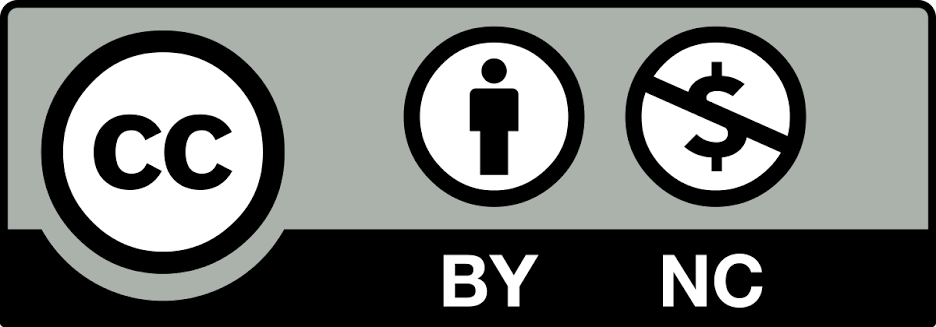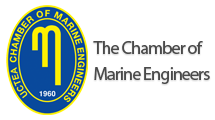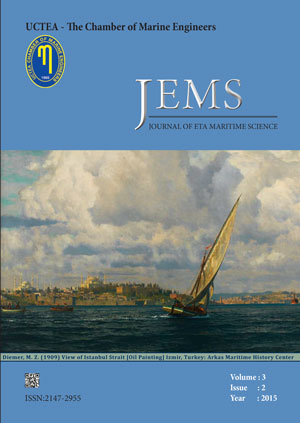

JEMS apply the Creative Commons Attribution NonCommercial 4.0 International Licence to all manuscripts to be published
ABSTRACTING & INDEXING
Volume: 3 Issue: 2 - 2015
| EDITORIAL (ED) | |
| 1. | The Definitions of Safety and Security Selçuk Nas doi: 10.5505/jems.2015.42713 Pages 53 - 54 Abstract | |
| FULL TEXT | |
| 2. | Journal of ETA Maritime Science (Volume: 3 Issue: 2, 2015) Pages 53 - 132 Abstract | |
| TECHNICAL REPORT (RP) | |
| 3. | A Study on Effects of Unsuitable Fuel and Insufficient Cylinder Lubricating Oil on Low Speed Marine Diesel Engine Murat Yapıcı doi: 10.5505/jems.2015.72691 Pages 55 - 66 Amaç: Çalışmanın amacı; gemilerde kullanılan yakıtların uygunluğu açısından önemli noktaları irdelemek, ayrıca ana makine olarak kullanılan iki zamanlı ağır devirli gemi dizel motorlarında silindir yağlama yağına olan etkileri incelemektir. Yöntem: Çalışmada 2007-2015 yılları arasındaki gemi kayıtları incelenmiş ve tablo 3de bulunan veriler elde edilmiştir. Geminin 39000 saatlik ana makine piston ve silindir bakım saatleri tablosu oluşturulmuştur. Bulgular: Uygun yakıt ve silindir yağlama yağı ile ilgili bakım sonrası uygun yağ miktarının tespiti yapılmıştır. Değişken kükürt oranlarına göre ayarlanabilen silindir yağlayıcıları (cylinder oil lubricator) için kükürt oranı ve yüke göre veriler girilerek Excel tabanlı yağ miktarı hesaplama uygulaması modellenmiştir. Sonuç: Yapılan çalışma sayesinde başka tonaj ve tipteki makinelere aynı model uygulanarak makine bakım geçmişi çıkarılarak eksiklikler saptanabilir veya hazırlıklar yapılabilir. Örneğin 15000-19999 çalışma saati aralığında 16 kez piston bakımı yapıldığına göre layner değişiminden sonraki ikinci 20000 saatlik dilimde 35000-40000 saatlik dilimde piston ve layner değişimlerinin olacağı önceden tespit edilerek gerekli yedek malzeme erken tedarik edilerek zamandan kazanılmış olur. Bu sayede daha büyük arızaların önü kesilmiş olur. Şirket ve gemi arasında planlı bakım sistemi daha verimli hale getirilmiş olur. Bu kapsamda yapılan çalışma ile literatüre gerçek bir uygulamadan yola çıkılarak ilerideki çalışmalar için başlangıç olması hedeflenmiştir. Objective: The aim of this study is to explicate the significant issues with regards to the suitability of the fuel consumed on board the ships, and in the meantime, to review its effects on two stroke slow speed diesel engines which are used as main engines on board. Method: Shipboard records between 2007-2015 are reviewed through the study and data on Table 3 are gathered. 39000 hours of main engine piston and cylinder maintenance schedule is formed. Findings: Post maintenance proper amount of lubricating oil is determined regarding the suitable fuel and lubricating oil. Excel based lub oil calculation sheet is modelled by the input of load&sulfur content based data for the cylinder lubricating oils wich are adjustable in accordance with the variable sulfur content. Conclusion: Same model can be applied to the engines with different type and tonnage and deficiencies can be stated and preparations can be made by extracting the engine maintenance history. For example, comsidering that piston maintenance was carried out 16 times through the 15000-19999 hours period, time can be saved by supplying the required spare parts in advance by anticipating the piston and liner replacements at the 35000-40000 hours interval of the second 20000 hours period after the first liner replacement. Major breakdowns can be prevented this way. Planned maintenance between the office and the vessel can become more efficiently. Study carried out in this context by evolving from real life applications, is aimed to be an inception for the future literature studies. |
| ORIGINAL RESEARCH (AR) | |
| 4. | Economic Analysis of A Ship Refrigeration System in case of Variable Sea Water Temperature Conditions Veysi Başhan, Adnan Parlak doi: 10.5505/jems.2015.29392 Pages 67 - 74 Bilindiği üzere Kyoto Protokolü, hidrokarbon yakıt ile çalışan enerji sistemlerinde karbon salınımını azaltmayı öngörmektedir. Mevcut teknolojiler incelendiğinde, hidrokarbon esaslı yakıt tüketen sistemlerde karbon salınımını doğrudan azaltacak bir yöntem hali hazırda bulunmamaktadır. Günümüzde, karbon salınımını azaltmanın en etkin yolu yakıt tüketiminin azaltılmasıdır.Son yıllarda gemilerde de enerji verimliliğine yönelik uluslararası kurallar yürürlüğe girmiştir. Gemilerde enerji tüketen bileşenlerden bir tanesi soğutma ve iklimlendirme sistemleridir. Mevcut gemilerde soğutma sistemleri ekstrem şartlara göre ve sabit devirde çalışacak şekilde tasarlanmaktadır. Bu sistemlerde kondanserde yoğuşma için soğutucu akışkan olarak deniz suyu kullanılmaktadır. Deniz suyu sıcaklığı arttıkça, soğutucu akışkanın kondanser çıkışında yoğuşmayı temin edecek şekilde kompresör çıkış basıncını arttırmak gerekmektedir. Bu durumda, kompresörün çektiği güç de artmaktadır. Deniz suyu sıcaklığı düştüğünde ise soğutucu akışkanın yoğuşmasınıçok daha düşük çıkış basınçta sağlamak mümkündür.Bu durumda da kompresörün güç ihtiyacı azalmaktadır. Sabit devirle dönen mevcut soğutma kompresörleriyle düşük deniz suyu sıcaklıklarında soğutma sisteminin enerji tasarruf potansiyelinden faydalanılamamaktadır. Bu çalışmada değişken devirli kompresöre sahip soğutma sistemi kullanılması durumunda; kompresör devri, kondanser çıkış sıcaklıklarına göre değişken hale getirilmesiylesoğutma sistemi etkinlik değerleri, sabit devirde çalışan soğutma sistemiyle karşılaştırılarak enerji tasarruf potansiyelleri hesaplanmıştır. As known Kyoto Protocol forces the states to decrease carbon emissions due to the combustion of hydrocarbon content fuels in the energy plants. When current technologies have been investigated, it seems that there is no method that directly decreases carbon emissions. Nowadays, the most effective way for decreasing carbon emissions is to develop methods that increase the fuel efficiency of systems. In recent years international rules related to energy efficiency ships came into force.One of the components that consume energy in ships is HVAC (Heating, Ventilating and Air Conditioning refrigeration) system. In existing ships, refrigeration systems are designed to work under extreme conditions and compressors work at constant speed. In these systems, sea water is used as a coolant in condenser. When sea water temperature increases, the compressor outlet pressure must be kept higher in order to ensure condensation in condenser outlet. This situation causes increase in power demand of compressors which result in decrease of COP. On the other hand, when the sea water temperature decreases, the power demand of compressor decreases. In that case, itcannot be benefited from energy saving potential of refrigeration system occurred in lower sea water temperature conditions. In this study, usage of variable speed compressors in refrigeration system is considered and a comparison of constant speed compressor system and variable speed compressor system is carried out. The condenser outlet temperature is utilized as main parameter for compressor speed adjustment and energy saving potential is calculated. |
| REVIEW (RE) | |
| 5. | Dry Port Development: A Systematic Review Fatimazahra Bentaleb, Charif Mabrouki, Alami Semma doi: 10.5505/jems.2015.98608 Pages 75 - 96 Çok modlu taşımacılıktaki düğüm noktaları olan kara limanları üzerine çalışmalar, deniz limanlarındaki artan tıkanıklığı azaltacak şekilde genişletilmiştir. Bu çalışmanın ana amacı, kara limanı araştırmalarının farklı bakış açılarıyla nasıl yürütüldüğünü incelemektir. Bu makalede, kara limanı kavramını incelemeyi amaçlamış mevcut araştırmaların sistematik bir inceleme ile yeniden özetlenmesine, genel bir bakış sunulmasına ve bir sınıflandırma önerilmesine çalışılmıştır. Bu makale, 1986 ile 2015 yılları arasında yapılmış olan kara limanları ile ilgili araştırmaları derleyerek, gelişimlerinin ana özelliklerini ve çok modlu taşımacılığa katkılarını analiz etmekle birlikte, yapılmış olan araştırmaların gelişimini göstermeye çalışan, sistematik bir inceleme sunmaktadır. Sonuçlar, kara limanları ile ilgili çalışmaların çoğunun stratejik düzeyde olduğunu ve Asya kıtasında yoğunlaştığını göstermektedir. Diğer karar düzeyleri ve kıtalara ilişkin araştırmaların gelecek çalışmalarda geliştirilmesi gerekmektedir. Mevcut çalışmalar kara limanı kavramı ile ilgili katkıda bulunuyor olsalar da, sınırlı coğrafi bölgeler dikkate alındığında operasyonel ve taktik düzey açısından eksikliklere meydan vermektedir. Studies on dry ports as nodes in multimodal transport have been expanded to decrease the mounting congestion on seaports. The principal objective of this study is to inspect how dry port researches have been conducted from different perspective. This paper tries to recap the existing researches that aimed to study dry port concept via a systematic review, to present a general overview of the researches on our relevant region and propose a classification for these researches. This paper present a systematic review of dry port that looks to illustrate the progress of researches on this area between 1986 and 2015, collecting researches on dry port concept and analyzing the main characteristics of the dry port development and their contribution to the multimodal transport. The results indicated that most dry port studies considerate the strategic level and concentrate in the Asian continent. Studies regarding other decision levels and continents have to be developed in further researches. Although the existing studies make a contribution in dry port concept, they allow gaps in terms of operational and tactical decision levels considering their limited geographical region. |
| ORIGINAL RESEARCH (AR) | |
| 6. | Key Performance Indicators Evaluation and Performance Measurement in Dry Port-Seaport System: A Multi Criteria Approach Fatimazahra Bentaleb, Charif Mabrouki, Alami Semma doi: 10.5505/jems.2015.88597 Pages 97 - 116 Kara limanı hizmetleri çok modlu taşımacılığın temel unsurlarındandır. Gelişim için gerekli olan altyapıyı oluşturmaktadırlar. Bu sebeple, uluslararası rekabet başarısına ulaşabilmek için performanslarının değerlendirmesi ve iyileştirmesi gerekmektedir. Bu çalışmanın amacı kara limanı sistemleri için yeni bir performans ölçüm modeli geliştirmektir. Bu amaç doğrultusunda, model çerçevesini belirlemek ve geliştirmek amacıyla mevcut çalışma ve araştırmalardan yararlanılmıştır. Bu çalışmada, kara liman sistemleri için MACBETH kullanılarak çok kriterli hiyerarşik bir model çerçevesi geliştirilmiştir. Bu çerçeve farklı seviyedeki müdürler tarafından kullanılabilecektir. Önerilen model çok modlu taşımacılık alanında performans değerlendirme boşluklarını ve ileriye dönük muhtemel seçenekleri öngörerek geliştirilmiştir. Sonuçlar ve metodoloji uygulanabilirdir. Karar vermede yöneticilere yardımcı olabilen ve sistemin küresel performansını yükselten bu metodoloji kullanılarak küresel performans seviyesini elde etmiş oluruz. Dry port-seaport services are key elements of a multimodal transport. They represent the needed infrastructure for its development. In this case, evaluating and improving their performance is necessary to achieve international competitiveness. The purpose of this paper is to develop a new model of performance measurement for the dry port-seaport system. To this aim, we have consolidated available researches and existing studies in order to identify and develop our proposed model framework. In this paper, a multi-criteria hierarchical model framework using MACBETH for dry port-seaport system has been developed. This framework can be used by managers at different levels of the system. The proposed model has been developed by exploring measurement gaps in multimodal transport field and by discovering prospective options from this area. The results and the methodology are practical. We obtain the global performance level of our involved system using our methodology, which can help managers in taken decisions and increase global performance of this system. |
| 7. | Cargo Demand Analysis of Container Terminals in Turkey Orkut Akar, Soner Esmer doi: 10.5505/jems.2015.54254 Pages 117 - 122 Limanlar dünyaya açılan ticaret kapıları olarak, ticaret sürecinde ulaştırmanın başladığı ya da sürdürüldüğü tesislerdir. Dünyada ticaret olduğu sürece deniz ticareti var olacak, gemi boyutları gelişimini sürdürecektir. Bu nedenle limanlar verdikleri hizmetleri geliştirmek durumundadır. Talep tahmini tüm işletmeler için geleceklerini görebilmek ve planlamalarını yapabilmeleri adına önemlidir. Limanlar için özellikle önemli olan yük talep tahmini ile gelecekte ne kadar yük elleçleneceğinin belirlenmesi yönünde fikir edinilmektedir. Limanlar gelişen ticarete hizmet edebilmek için gelecekteki yük talebini tahmin etmeli, yeni yatırım ve gelişim planlarını oluşturmalıdır. Bu çalışmada yük talep tahmini için çoklu regresyon analizi kullanılmıştır. Çalışmanın amacı 2023 yılı için yük talep tahmini yapmak ve Türkiyedeki limanların bu yükü elleçlemek için yeterli olup olmadığını belirlemektir. Çalışma sonuçlarına göre Türkiyedeki mevcut ve planlanmış konteyner terminallerinin mevcut talebi elleçleyebildikleri ve 2023 yılına kadar bir kapasite sorununun yaşanmayacağı belirlenmiştir. Ports are the points where the countries meet the world and also one of the main facilities where transportation starts or continues in the trade process. As long as trade exist in the world, sea trade will also exist and to keep abreast of the times vessels will continue to grow, for this reason, ports will grow and continue to improve to serve better. The objective of this study is to calculate the containerised cargo demand for 2023, and to analyse if the container ports in Turkey will be able to handle increasing container cargo demand. Demand forecasting is significant for all the firms to see their future better and make appropriate plans. It is important especially for the ports to get an idea how much cargo they will handle next year. In order to serve increasing trade, ports have to forecast their cargo demand for future and make new investment or improvement plans. In this study, multi regression analysis is used to cargo demand forecasting of ports in Turkey. According to results current and planned container terminals in Turkey are already able to handle current demand and they will be able to handle increasing containerised cargo demand until 2023. |
| BOOK REVIEW (BK) | |
| 8. | Automatic Container Terminals and Terminal Management Information Systems Çimen Karataş Çetin doi: 10.5505/jems.2015.21939 Pages 123 - 124 Abstract | |
| ERRATUM (ER) | |
| 9. | Erratum to JEMS (Journal of ETA Maritime Science), Volume 3, Issue 1 (2015) Remzi Fışkın doi: 10.5505/jems.2015.38358 Pages 125 - 126 Abstract | |
| INDUSTRIAL PERSPECTIVE | |
| 10. | The Risk of Valuation and Revaluationin the Ship Finance Loan Agreements Ahmet Yasar Canca doi: 10.5505/jems.2015.14633 Pages 127 - 132 Gemilerin satın alımları sırasında kullanılan yatırım kredileri, uzun vadeli krediler olup, bu kredinin tespitinde gemi bedelinin değerlemesi esas alınmaktadır. Kredi veren kurumlar krediyi verirken istedikleri finansal güvencelerin korunması amacıyla yatırım sözleşmelerinedeğer koruması (assetprotection) maddesi koyarak, krediye konu geminin istenilen zamanlarda yeniden değerlemesini isteyebilmektedir. Yeniden değerleme sonrası finansal güvencede bir eksiklik olursa borçludan bunun tamamlaması istenmektedir. Bahse konu kredi sözleşmelerinin maddelerinde açıklanan yeniden değerleme yöntemleri, kredi kullanan işletmelere bazen fırsatlar sunarken bazen de tehditler oluşturabilmektedir. Bu nedenle sözleşmedeki yeniden değerleme durumunun çok iyi bir şekilde incelenmesi gerekmektedir. Konunun daha iyi anlaşılabilmesi amacıyla, kredi faizi, komisyon vb. ticari terimler yazının kapsamı dışında bırakılmıştır. Ship loan credits used during the purchase of ships is considered to be long-term finance credits and their amounts are determined according to the valuation of the ship they are concerned with. The value of the ship determined at the time loan agreement is signed, goes under a revaluation process at the debt payment period. Even sometimes the revaluation methods mentioned in the bank loan agreements can bring beneficial opportunities to borrower shipping companies, they can also become serious financial threats in the long run. This is why a detailed and an accurate examination of the term revaluation is crucial when talking about the financial loan agreements. In this paper the possible financial threats within the valuation process of a ship is tried to be clarified within three different scenarios, with different examples. To be able to focus on the issue, financial terms such as interest and commission is not taken into the papers context. |









